Two-Bee, or Not Two-Bee
By Jim Naughton
TWO-BEE, or NOT TWO-BEE, THAT IS THE QUESTION
Zwei-bae, oder nicht Zwei-bae, das ist heir die Frage…somehow the pun doesn’t work in German. But it is an important question for PACT players. When you buy your new T72 battalion for BattleFront’s Team Yankee system, you can build your T72 models as the older T72/T72M variant or the brand-spanking-new T72B variant. The layers of reactive armor look awesome. The T72B brings missile capability along with the reactive armor, as well as advanced penetrators.
If you buy the AT-8/AT-11missiles for long-range engagements the T72B makes NATO come to the party by outranging their tanks and is a threat to hunter-killer helicopters. The move-and-shoot capability of the AT-8/AT-11 ensures that even from reserves, the T72B is a credible threat to any visible target. The ERA gives the tank the ability to crash lines of Irish Guards, an ability the Soviet/PACT has been sadly lacking. My heart, be still.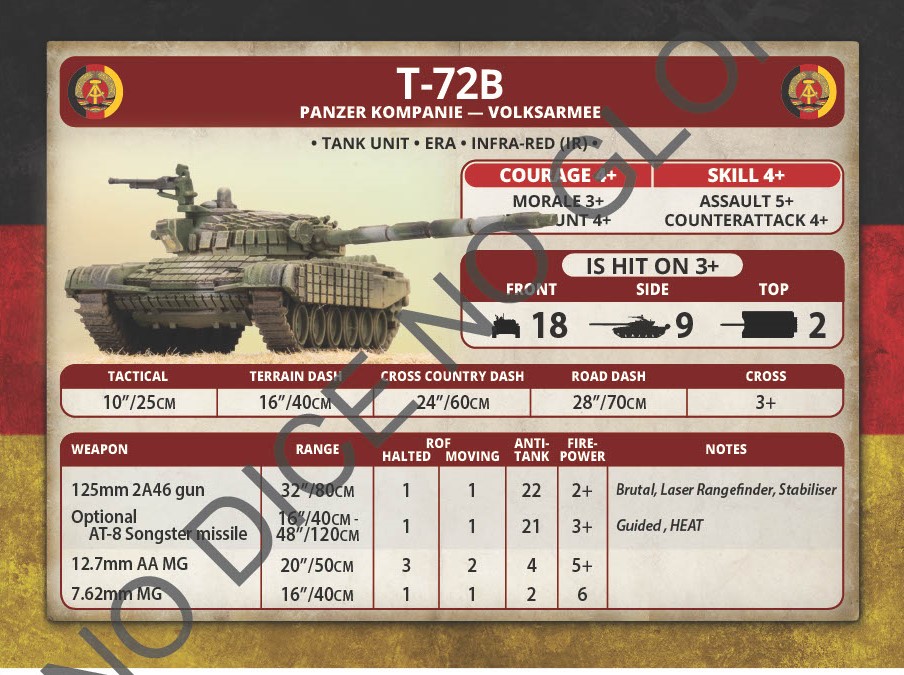 But…and there is always a but…at the entry level (three tanks) the T72B costs roughly twice the venerable T72M. Three East German T72B enters the running at 13 AP while the T72M 3-pack costs 7 AP. The three-pack Czech T72B costs 12 AP to 6 for its counterpart. The Polish is 15 AP compared to 7 AP for the basic T72M.
But…and there is always a but…at the entry level (three tanks) the T72B costs roughly twice the venerable T72M. Three East German T72B enters the running at 13 AP while the T72M 3-pack costs 7 AP. The three-pack Czech T72B costs 12 AP to 6 for its counterpart. The Polish is 15 AP compared to 7 AP for the basic T72M.
So how many T72Bs represent a solid choice for a gamer? And if starting a new PACT army, what do I build?
Only the Soviets have a clear distinction in their T72s. The T72B’s armor suite is better than T64, and the cost per tank at the entry-level is only 25 percent higher than the T72A. For a new Soviet player, building all their new tanks as T72B is a no-brainer.
But not necessarily for PACT players. The article examines the Cost and Effectiveness of the T72B compared to the T72M.
Cost and Effectiveness
Cost is defined as AP cost. Whether you buy your T72s in the battalion box set or the company box, the dollar price per tank is defined by the box, not the tank you build. The battalion box set is a huge advantage if you are interested in almost any of the other models. If not, and you can’t trade/sell the residue to your buddies, go with the company box. But the kits are the same. 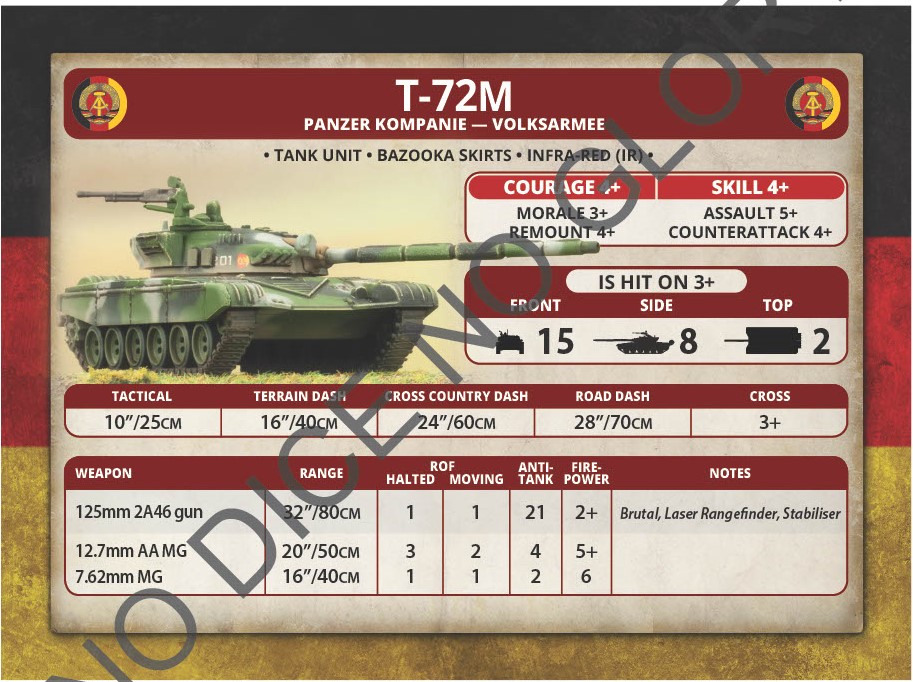 Effectiveness is measured in the Green Machine by Lethality and Vulnerability. We’ll discuss those issues briefly and present some (shudder) math to assist in the analysis.
Effectiveness is measured in the Green Machine by Lethality and Vulnerability. We’ll discuss those issues briefly and present some (shudder) math to assist in the analysis.
I’m not going to complicate matters by considering the effect of bails. Bails become dead tanks when a second hit forces a remount check, or when the bailed tank is assaulted by infantry, or an accumulation of bailed and dead tanks forces a unit into Bad Spirits. Each such event adds fractional kill probabilities to the calculation, but typically the fraction is not worth chasing.
For example, two 3-tank units of T72Ms fire on the same platoon of M1 Abrams in the open. Each platoon will score 1.5 hits, on average. The ’extra’ hit, if any, automatically spreads to a second Abrams.
So 50 percent of my shots miss, 50 percent of my hits result in a shower of sparks, and no further damage otherwise generating a 22 percent chance of a bail and a 28 percent chance of a kill. If by some stroke of luck I hit a bailed tank again with the second unit, my opponent has a 67 percent chance to false target to another tank. If he fails, and I bail it again, he gets to remount check which normally averages 50 percent success. Chaining the probabilities up, the contribution for a double bail resulting in kill in this situation is less than one percent…compared with 28 percent chance of killing the hapless tank with each hit (total, 56 percent). 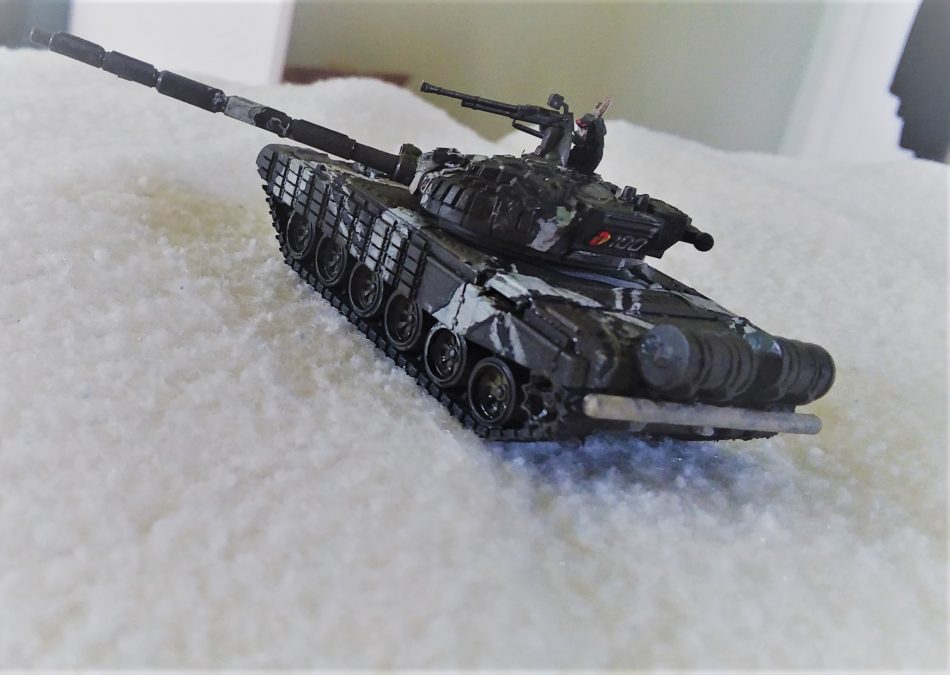
Lethality
The measure of the lethality of these two tanks is Armor Penetration and Firepower. In BF’s model, the Firepower is the same, so lethality boils down to AP Value. The to-hit numbers are the same, and the ranges (save for the optional AT-8/AT-11 missile at added cost) are the same. While a complete calculation of lethality would require the formula P(K) = P(Hit)*P(Penetration)*P(FP), we’re going to take advantage of the identical statistics to focus on P(Penetration).
The following table gives the probability of penetration for the two guns at long-range and short-range.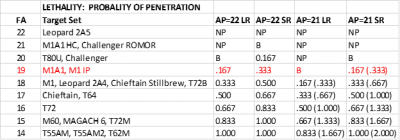 When you read the table, NP = no penetration, B=Bail, and the numbers are the probability of penetration. It looks like the T72B is a clear winner until you remember roughly two T72Ms are shooting. That’s the point of the number in the parentheses in the AP=21 columns. Two tanks generate twice the lethality of a single tank.
When you read the table, NP = no penetration, B=Bail, and the numbers are the probability of penetration. It looks like the T72B is a clear winner until you remember roughly two T72Ms are shooting. That’s the point of the number in the parentheses in the AP=21 columns. Two tanks generate twice the lethality of a single tank.
What seemed to be a simple choice to step up to AP=22 is not simple. The red line highlights the breakpoint in the performance of the two tanks. If your opponents commonly play Leopard 2A5, M1A1HC, or Challenger with ROMOR, there is no lethality benefit in taking T72Bs. Having twice the guns pummeling the other opposing vehicles, and twice the tanks charging to flank the big tanks pays off. Whether it pays off in actual play depends on skill and dice but buying T72Bs doesn’t gain you much lethality if facing FA=21+ tanks.
The T72B outperforms the T72M against T80U and Challenger at close range simply because the T72M can’t penetrate those tanks. At FA=19 the T72B has an advantage at long range (only). At FA=18 and below, the lethality advantage of the T72B vanishes.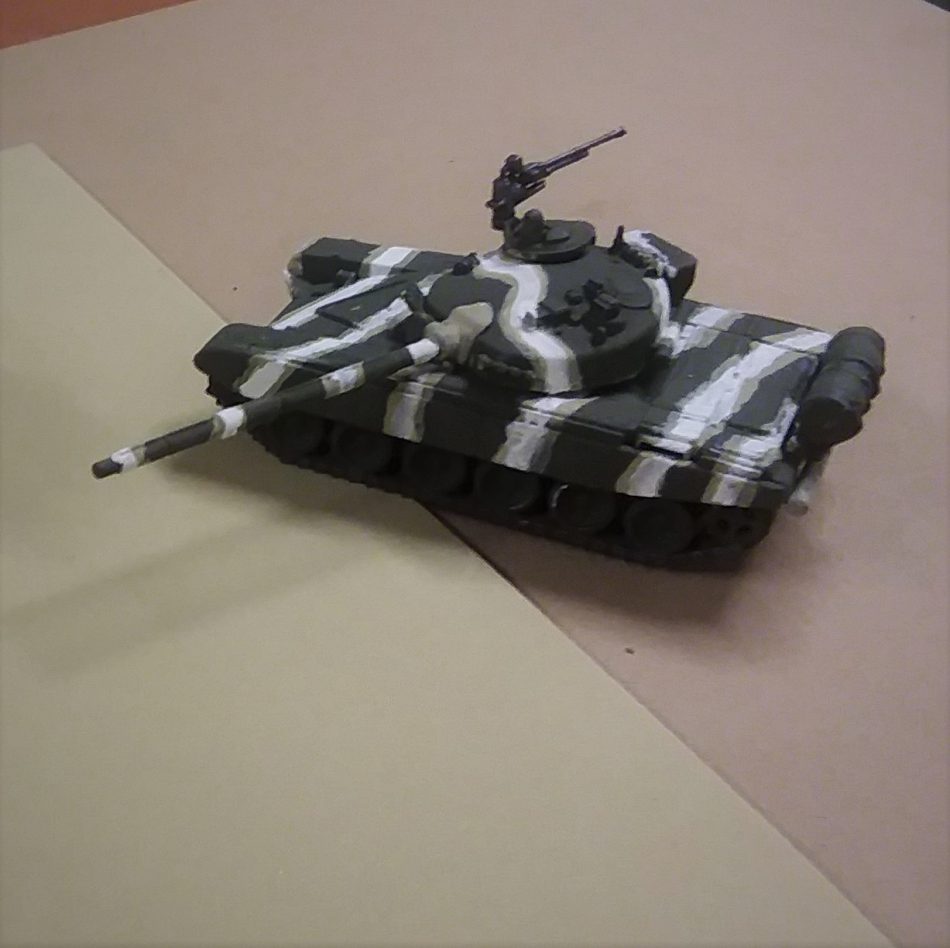
Vulnerability
The other issue is vulnerability. How likely is the T72B to survive compared to the T72M? If T72Ms are killed three times faster than the T72B, then the balance shifts to T72B. Unfortunately, that’s not as simple a question as lethality.
The T72B enjoys a Front Armor (FA) advantage of 3 numbers over the T72M. While most tank guns and ATGM can readily penetrate the T72M with FA=15, the same is not true with the T72B, particularly at long range.
Another factor is while tank cannon is mostly Firepower (FP) =2+ (RDF-LT being the exception at 3+) ATGM are almost all 3+. There are two survivability outcomes for many AP values. So I have to account for Firepower. The results in this table, unlike the first, are P(Penetration) * P(Firepower=kill)
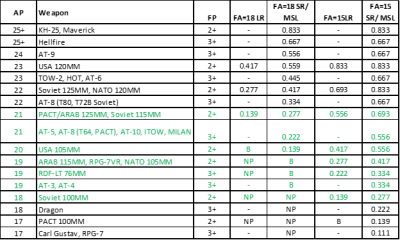
As with the first table, NP = no penetration, B=bail only. A ‘-‘ appears with missile systems because there is no ‘long-range’ degradation.
This table surprised me because at first glance it seems to say there is little benefit to the T72B’s armor. With high-powered attackers, the dominating effect is the enemy firepower. Only at the AP=24 (AT-9) do we see some differentiation between targets. But remember that the T72Ms are twice as numerous as T72B for the same points in a PACT army. To be competitive the T72B must have half the vulnerability or less than the T72M. We first see that at AP=22.
It turns out the sweet spot is between AP=18 and AP=21. Above that, the vulnerability is favored by having more tanks. Below AP=18, the potential damage is noise level for the T72M and non-existent for T72B – those enemy systems will have to wait on opportunities to shoot flanks. But that zone has a profound effect on play, because it’s where BMPs and ITVs and HMMWV-TOWs live, as well as the 105mm family of weapons and MILANs.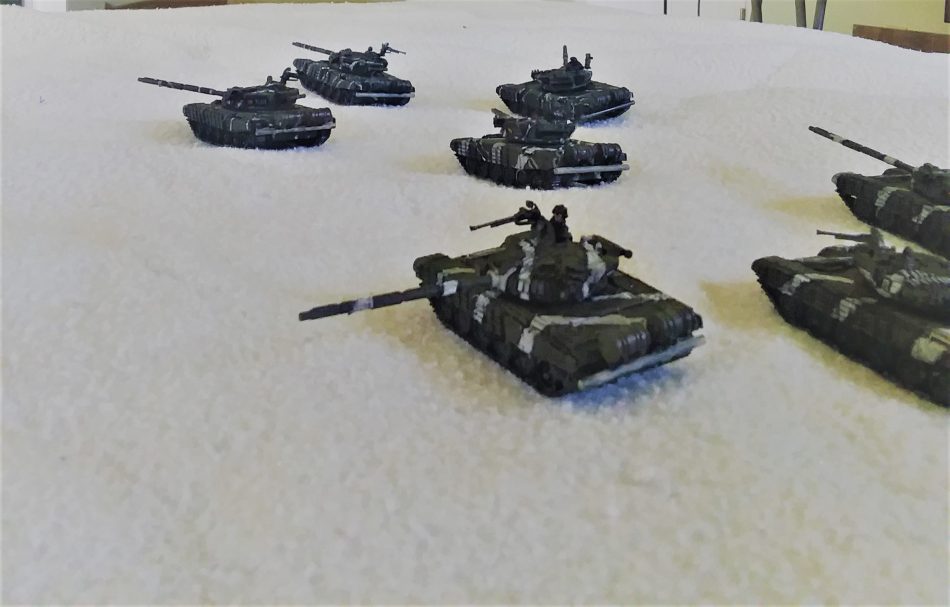
Analysis
Transitioning to AP=22 guns does not produce meaningful additional lethality. There are only a couple targets where the T72B outperforms two T72M: T80U and basic Challenger at short range, and M1A1/M1 IP at long range. Everywhere else a pair of T72M equals or exceeds the T72B’s lethality.
Someone is probably squirming in their seat, eager to point out that the equation isn’t exactly 2 for 1. In fact, depending on how I like to drive my tanks, it changes. The bigger the company, the further it drifts from 2 for 1. It tops out at 2 T72B for 3 T72M in a 10-tank company. If you use that ratio on our lethality calculation, you will find the lethality of the two tanks equivalent. You will also find yourself paying a ferocious premium to achieve that equivalency. You can buy 15 T72M for what you pay for 10 T72M in a ‘big company,’ and 12 T72B (roughly) for the price of the big T72B company. 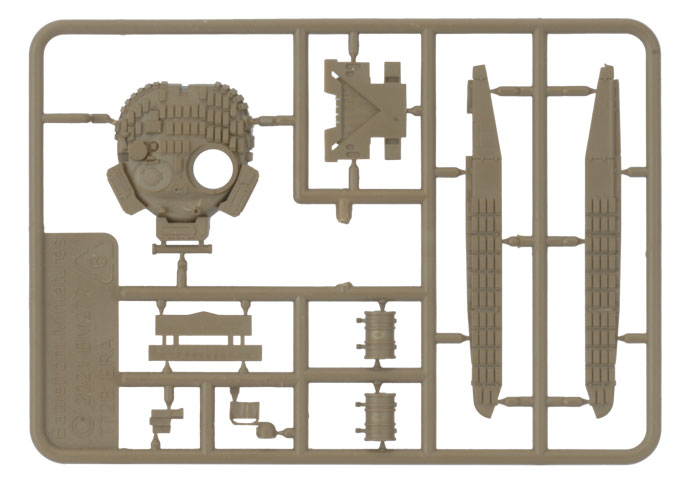 Vulnerability is where the T72B makes its mark. But not if your friends are into the high-end tanks. You need mass to press forward to flank the behemoths, or other weapons – like the AT-6 Spiral or the S-24 Rocket – to take them down. Against anything else, hanging back at long range will make NATO struggle to kill your T72Bs. However, if your style of play sees you go in amongst them, a mix makes more sense.
Vulnerability is where the T72B makes its mark. But not if your friends are into the high-end tanks. You need mass to press forward to flank the behemoths, or other weapons – like the AT-6 Spiral or the S-24 Rocket – to take them down. Against anything else, hanging back at long range will make NATO struggle to kill your T72Bs. However, if your style of play sees you go in amongst them, a mix makes more sense.
Where the T72B suffers is with hordes of the lesser beasts. Swarms of Arab T62s and T55s (and AMX-RC plus AMX-30, and perhaps Leopard Is) represent a challenge, so the T72B is very much in need of infantry to hold a screen and numerous effective missile platforms – BMP-2s and Spandrels – to meet that threat.
So at the end of the day, the answer depends on what your opponents are driving. And in competitive play, that probably will push you to a mixed force. An East German force can take a T72B battalion and complement it with a Soviet T62M battalion, for example. And supplement the T72s with black box support of up to three companies of T55 variants, plus a BMP-2 company. That’s a quite nasty force. Other combinations are clearly possible.
But that doesn’t answer the question of how to build your T72s.
Force Building
For my East Germans there wasn’t any question – as soon as I saw the points, I wanted seven T72B. Since I already had eleven T72M for my East German Army, that permitted a mixed battalion (a third company can be T72M) and leaves some T72M for a motor rifle battalion.
Why seven T72B? Several years ago, as ‘allied’ formations became possible, I ran a Soviet T64 ‘battalion’ of seven tanks alongside a EG motorsierte Schutzen battalion in BTR60s. It was very effective in a defensive role. And coincidentally, the EG T72B AP cost is EXACTLY the same as the T64. Now the same firepower and slightly better protection is available without taking an allied formation.
As a side note, the formation diagrams have prohibited PACT T72B formations with BTR/OT64 companies. Since East Germany never had enough BMPs to fully equip their two Panzer Divisions (the 7th and 9th Motorsierte Schutzen Regiments were still riding BTRs at WALLFALL) I find it puzzling, but that’s the current ruling. Also, T72Bs can’t be found in BMP Motorsierte Schutzen Regiments. Same deal for other PACT armies. But the Soviets can field them in their Motor Rifles. Go figure. My EG decision doesn’t help a new player or an old player building a new army. Since my next project is a Czech army, the calculation I ran for that force is relevant. First, the option to have a T72B battalion requires a minimum of seven models, just as in the EG. The AP cost for the smallest unit is 12 points. A 4-tank company costs 17-points and the five tank company costs 23-points…and thereafter each additional tank alternates in cost between 5-points and 6-points.
My EG decision doesn’t help a new player or an old player building a new army. Since my next project is a Czech army, the calculation I ran for that force is relevant. First, the option to have a T72B battalion requires a minimum of seven models, just as in the EG. The AP cost for the smallest unit is 12 points. A 4-tank company costs 17-points and the five tank company costs 23-points…and thereafter each additional tank alternates in cost between 5-points and 6-points.
The Czech T72M starts at 7-points for a three-pack, and each additional T72M adds 3-points in cost. Because the Czechs remount on 5+ a four-pack seems smarter but only time will tell. So I’ll be building nine T72B and nine T72M for the Czechs – allowing a T72B battalion with 9xT72B and 4 x T72M or a T72M battalion with 9xT72M and up to 7xT72B in a single company. T55AM2 battalions in the mix, as well as motorized infantry, also gives a place for the extra T72Ms in a second battalion.
Given the Poles’ better remount numbers (and higher basic cost) I would be running three-packs for a Polish army, like my East Germans. My recommendation for the Poles is seven T72B and ten T72M.
Bringing me to the Soviets. Unless you’re a brand-new Soviet player, you probably have T64s and T80s. The T64 does most tank missions just as well as the Soviet T72B, is slightly cheaper, and has advanced stabilizers. T80 has ERA but is pricey. So the T72B is probably a niche weapon for old Soviet players – a single 3, 4 or 5-pack company providing the opportunity to support a motor rifle battalion and cheaply crash through NATO infantry lines. However, if new to the Soviets, the T72B represents a solid alternative to the pricey T80U. Going that way I would build 11-15 T72Bs for a Soviet force.
AT-8 Songster Missile/AT-11 Sniper Missile
BF depicts two versions of the 125MM gun-fired Soviet missiles. The AT-8 (Soviet designation 9K112 Kobra) was introduced in the late ‘70s and steadily modified, with the last modification leading to the AT-11 (Soviet 9M119). The AT-11 adds range and a tandem warhead to the package. BF doesn’t reflect the additional range – both missiles have 16-48” as the performance envelope. The AT-8 brings AP-21 and the AT-11 brings AT-22. Both missiles have FP=3+. So far the only units affected by the TANDEM wonder power are Soviet/PACT…I imagine that will change.
An important note is that the stabilizer/advanced stabilizer attribute does not appear on either missile line. You can’t exceed tactical and fire the missile, limiting T72B to a 10” move during missile engagements.
Only the Soviet T72B (and the T80) can have AT-11, and these missiles cost 1 AP for each tank so equipped. The PACT T72B can use the less capable AT-8 at 2 points per company and one point for a command tank. If using PACT all-T72 forces, it’s probably a good idea to equip some T72Bs with the missiles, particularly a larger unit for use as ambush/reserve. Running a mix of T55 and T72, the missiles are better left to the T55AM2 Racketten company.
As we have seen with the main gun round, the difference between AP-22 and AP-21 is minimal. The real question is the advantage gained by move-and-shoot missiles. This mainly exists as ‘got you last’ for helicopters, deploying from ambush and then moving to gain flank and entering the table from reserve into the fight immediately. I’ve tried all of these with T64s are one point or the other, and generally been disappointed with the results. The AT-10 Stabber found with the T55 family gives a meaningful additional capability for the same number of points added to a much cheaper vehicle. It just can’t move and shoot.
If you’re mainly looking for an antihelicopter weapon, the points invested in AT-8 are better invested in Gaskin or Gopher and the minimum points for an AT-11 will buy a pair of Geckos.
If you are going to use the T72B as a hammer to clear infantry off an objective, the AT-8/AT-11 is probably wasted points. 
Software and Firmware Effects
To wargamers ‘software’ is the way we use our toys. ‘Firmware’ is the toys themselves. We obtain new toys periodically to adjust our – or our opponent’s – ‘software’ and make him consider new ‘firmware.’
These are the intangible effects of using T72B in your list, and hard to quantify. Introducing T72B into the PACT kit bag allows the three PACT nations access to a tougher tank. It may not generate as much firepower as twice its numbers in T72M, but it will substantially alter NATO thinking. For example, social media forums indicate that the M1 IP is the ‘meta’ for American armor. The M1 IP costs 9 AP and shoots ROF=2 AP=20. Two small companies of T72B cost roughly the same as three M1 IP (24-30 AP vs 27 AP).
But the T72Bs penetrate the M1 IP at long range (M1 IP can only bail the T72B at long range) and penetrate M1 IP twice as often at short range. The Americans can downgrade to seven M60s or twelve RDF-LT…but that forces them to seek the flanks of the T72B, exposing themselves to fire from BMPs, Spandrels, Spigots, and the odd T55. Or they can upgrade to M1A1, reducing to two tanks. Or select M1A1 HC, gaining impervious front armor but having two tanks cost as much a NINE T72B. Or give up tanks altogether and rely on Bradleys, HMMWV-TOW and ITV.
Similar effects dog the West Germans, Israelis, and the other NATO nations who use only 105mm gun tanks. The UK’s answer is Chieftain with Stillbrew, but the weakness of reduced ROF when maneuvering and vulnerability to AT-21 from T72M and various PACT missiles makes the UK player think of Challengers.
On the downside, the T72B is a comparatively pricey tank for the PACT. This makes ‘nibbling’ by Hunter/Killer attack helicopters and Mavericks threatening. Driving increased emphasis on the expensive Gecko ADA vehicle to deal decisively with long-range air threats.
As you build your force and decide how to build your new T72 models, factor these considerations in. Remember ‘surprise’ is something that takes place in your opponent’s mind. And surprise may be all T72B or no T72B.
Conclusions
At the start, I asked the question, TWO-BEE or NOT TWO-BEE? The most important conclusion is that IT DEPENDS. If you are an experienced player, you probably have ideas about how you’re going to use T72B. I hope the tables presented above clarify the ways in which T72B might benefit your army, beyond the simple ‘It’s got ERA, let’s show those Irish Guards a thing or two.’
For both new and old players, the tables show how the T72B interacts with its opponents. If you add T72B to a PACT force, you are reducing lethality (except against a narrow target set) but gain a compensating reduction in vulnerability – and more than just compensation against the most common weapons. This allows you to make informed decisions about how to use T72B. The discussion about gun-launched missiles shows a minimal benefit for the missiles. And no benefit at all if using the T72B aggressively, as the target (except attack helicopters) will always be hit harder by the main gun, and frequently within the missile’s short-range restriction.
The discussion about gun-launched missiles shows a minimal benefit for the missiles. And no benefit at all if using the T72B aggressively, as the target (except attack helicopters) will always be hit harder by the main gun, and frequently within the missile’s short-range restriction.
And we briefly discussed how T72B may cause your NATO opponents to rethink their force choices.
For me, this journey reinforced my initial decision to acquire seven T72B for my East German army. And made clear the mix (9 of each) that I will initially use for my Czech army.
Ideally, those answers will help players new to the game or experienced players taking a dip in the PACT pool.

Excellent analyses!
Thanks